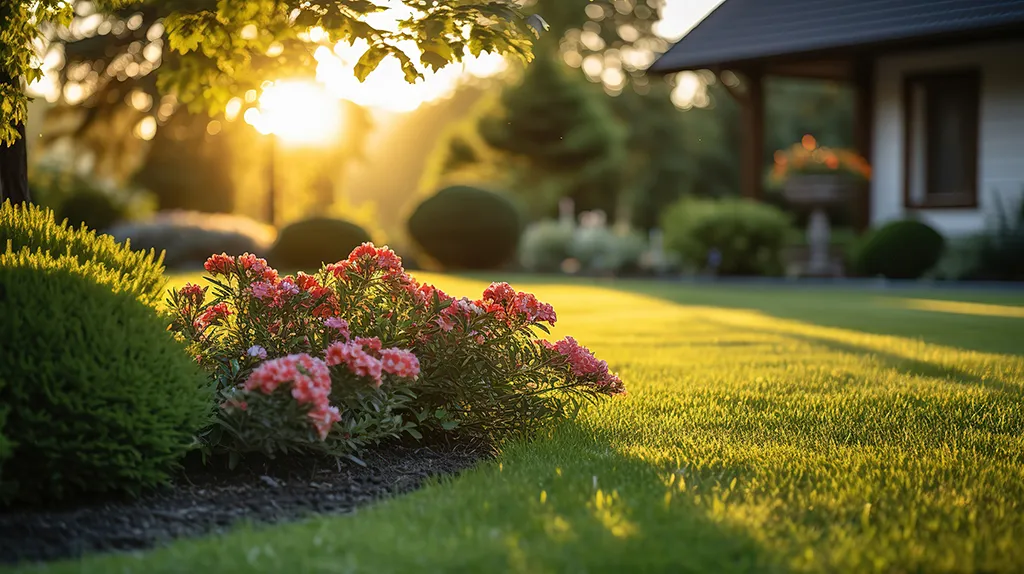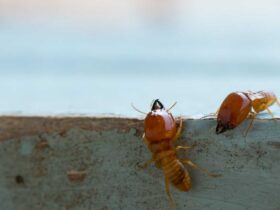Understanding Your Soil: The Foundation of a Thriving Lawn
Testing Your Soil pH: The Key to Nutrient Absorption
Before starting your lawn care journey, understanding the soil is essential, especially when considering lawn care in Coeur D’Alene. Soil pH is a key factor in how effectively plants can absorb nutrients, and in Coeur D’Alene, soil pH levels often tend to be on the acidic side. Conducting a soil test is a vital first step, as it measures pH levels along with nutrient content and organic matter. You can obtain a testing kit from local garden centers or send a sample to a lab for a detailed analysis. For most grass types, the ideal pH falls between 6.0 and 7.0. If your soil is too acidic, adding lime can help, while sulfur can lower the pH if it’s too high. Adjusting the pH improves nutrient availability and boosts soil health, paving the way for a more resilient, vibrant lawn.
Amending Soil: Turning Clay into a Lush Green Canvas
Coeur D’Alene is often characterized by heavy clay soils, which can be a double-edged sword. While clay retains moisture and nutrients, it can also lead to drainage issues and compacted soil. To transform clay into a fertile substrate conducive to growth, regular amending is fundamental. Incorporating organic matter, such as compost or well-rotted manure, can significantly enhance soil structure. This process decays over time, enriching the soil with essential nutrients and improving aeration. The addition of sand can also break up heavy clay, aiding drainage and root penetration. To maximize effectiveness, consider performing a core aeration prior to amending, which creates small holes in the soil to improve the interaction between the organic matter and the existing soil. By implementing these strategies, you’ll cultivate a vibrant lawn that can thrive in even the most challenging soil conditions.
Microbial Life: The Unsung Heroes of Your Lawn’s Ecosystem
The role of microbial life in soil health is often underestimated, but these organisms are vital for a thriving ecosystem. Microbes aid in nutrient cycling, breaking down organic matter, and promoting root growth. By fostering a diverse microbial community, you improve your soil’s resilience to pests and diseases. To encourage healthy soil biology, avoid harsh chemical fertilizers and pesticides that can negatively impact these beneficial microorganisms. Instead, opt for natural fertilizers derived from plant or animal sources. Regularly adding organic matter enhances food sources for these microbes, leading to a more stable and productive soil system. Practices such as mulching and minimizing soil disturbance can help protect these critical organisms. Additionally, promoting biodiversity through a variety of plants can create a balanced ecosystem, further supporting microbial health.
Choosing the Right Grass: More Than Just Beauty
Climate Considerations: Which Grass Thrives in Coeur D’Alene?
The climatic conditions of Coeur D’Alene, which include cold winters and warm summers, play a significant role in selecting grass types that will flourish in your lawn. Cool-season grasses are generally the best choice for this region, as they thrive in temperatures between 60-75 degrees Fahrenheit. Varieties such as Kentucky Bluegrass, Perennial Ryegrass, and Tall Fescue not only establish quickly but also offer excellent drought resistance. Kentucky Bluegrass is particularly revered for its lush green color and ability to recover from drought due to its extensive root system. Alternatively, Perennial Ryegrass germinates rapidly and is especially useful for quick patches or overseeding, while Tall Fescue provides deep rooting capabilities and heat resistance. Choosing the appropriate grass type ensures a robust lawn that can endure local weather fluctuations, providing sustained beauty year-round.
Diversity in Grass Types: Blending for Resilience and Aesthetics
Incorporating a blend of grass types can confer multiple benefits, including enhanced resilience to diseases, pests, and changes in weather. A diverse lawn not only improves aesthetic appeal but also creates a more stable environment for each species to thrive. Planting a mixture of Kentucky Bluegrass and Tall Fescue, for example, combines the lush look of Kentucky Bluegrass with the drought resistance of Tall Fescue. This blend ensures that when one grass type struggles due to environmental stressors, the other can step in to fill the gap. Additionally, a variety of textures and shades can create a visually dynamic lawn, appealing to both homeowners and visitors alike. When selecting your grass blend, consider factors such as sunlight exposure, foot traffic, and water needs to create a tailored mix that will flourish in your specific conditions.
Native Grasses: Why They’re the Ultimate Low-Maintenance Option
Utilizing native grasses is an increasingly popular choice for creating sustainable lawns in Coeur D’Alene. Native grasses, like Idaho Fescue and Bluebunch Wheatgrass, are well-adapted to the local climate and soil conditions, requiring less water and fertilizer than non-native counterparts. These grasses have evolved to thrive in the region’s specific conditions, making them inherently resilient to pests and diseases. Furthermore, employing native grasses promotes biodiversity by providing habitats for local wildlife and beneficial insects. They are often lower maintenance, needing less mowing and fewer inputs, which can lead to cost savings over time. By opting for a native grass lawn, you not only create a beautiful landscape but also contribute to the ecological health of the area.
Watering Wisely: The Art of Hydration for Your Lawn
Timing is Everything: When to Water for Optimal Growth
Watering is an art that requires knowledge of timing and technique to be effective. The best times to water your lawn are early in the morning or late in the afternoon, avoiding the midday sun to reduce evaporation. Watering during these cooler periods allows grass to soak up moisture more efficiently. Typically, lawns need about 1 to 1.5 inches of water per week, but it’s crucial to adjust your watering routine based on rainfall and temperature. Observing your lawn is key; if the grass starts to dull or footprints become prominent, it’s time to water. Over-watering can lead to shallow root systems and increase susceptibility to disease while under-watering can stress the grass. A well-timed watering schedule fosters a more robust lawn, ensuring healthy growth and vitality.
Smart Irrigation Techniques: Conserving Water Without Sacrificing Quality
Integrating smart irrigation techniques into your lawn care routine supports both water conservation and optimal grass health. Drip irrigation and soaker hoses provide targeted watering, minimizing waste and delivering moisture straight to the root zone where it is needed most. Rain sensors or smart controllers can automatically adjust your watering schedule based on current weather conditions, eliminating unnecessary watering during rainy days. Additionally, employing mulch around plants and flower beds can help retain soil moisture and reduce evaporation. Grouping plants with similar water needs together promotes efficient irrigation, further conserving water. By using these techniques, you can maintain a lush lawn while staying environmentally responsible and reducing costs associated with water use.
Understanding Grass Needs: How Deep Should You Water?
The depth of watering is just as critical as the frequency and timing. Grassroots typically grow between 6 to 12 inches deep, depending on the grass type and soil conditions. Aiming to water deeply but less frequently encourages deeper root growth, allowing your grass to be more drought-resistant and resilient. It’s beneficial to water until the soil is moist to at least 6 inches deep, which usually requires 1 to 1.5 inches of water applied over several days. A simple way to gauge soil moisture is to insert a screwdriver or soil probe into the ground; if it penetrates easily, the soil is adequately moist. In contrast, if you meet resistance, it’s time to increase your watering depth. Adhering to these guidelines can help cultivate a healthier lawn that can withstand both dry spells and heavy rainfall.
Pest Management with Precision: Keeping Your Lawn Healthy
Identifying Pests: Spotting The Troublemakers Early
Effective pest management begins with the ability to identify potential problems early on. Coeur D’Alene lawns can be affected by common pests, including grubs, chinch bugs, and various insects that compromise grass health. Regularly inspect your lawn for signs of pests, such as chewed blades, irregular patches of discoloration, or unusual insect activity. Developing an understanding of the life cycles of common pests can provide insight into when they are most active, allowing for timely interventions. Utilizing yellow sticky traps can also assist in monitoring pest populations. By keeping an eye out for early signs of infestation, you can address issues before they escalate, leading to a healthier and more resilient lawn.
Organic Solutions: Eco-Friendly Methods for Pest Control
Turning to organic solutions presents an effective and environmentally friendly means of managing lawn pests. Products that incorporate natural ingredients like neem oil, diatomaceous earth, and insecticidal soaps can deter unwanted pests while minimizing harm to beneficial organisms. Neem oil disrupts the life cycle of pests, preventing them from feeding and laying eggs, while diatomaceous earth provides a physical barrier that damages exoskeletons upon contact. Additionally, introducing beneficial insects such as ladybugs and lacewings can create a natural balance, as they prey on common lawn pests. Establishing habitat for these beneficial insects is as simple as planting native flowers or maintaining a diverse ecosystem. By focusing on organic pest management methods, you contribute to a healthy ecosystem and sustain the overall health of your lawn.
Building a Balanced Ecosystem: Attracting Beneficial Insects
A balanced ecosystem is vital for the long-term health of your lawn. Encouraging beneficial insects not only reduces the need for chemical inputs but also bolsters your lawn’s natural defenses. Planting a diversity of flowering plants provides nectar and pollen for beneficial insects, attracting them into your garden. Native plants are particularly effective as they are adapted to your local environment and flora.
For example, adding plants like clover, dill, and yarrow not only enhances the visual appeal of your lawn but serves as a habitat that draws in predatory insects. Creating habitats such as insect hotels or plant shelters can shelter beneficial insects throughout different seasons. Implementing these practices contributes to a vibrant ecosystem, optimizing the health of your property while aligning lawn care with environmental stewardship.











